Cultivate Digital Wellness Habits for a Healthier Life
Technology shapes nearly every moment of our day. From morning alarms to late-night streaming, screens fill over 7 hours of the average American’s daily routine. While these tools keep us connected, they can also leave us feeling drained if we don’t set boundaries.
Creating a mindful relationship with devices isn’t about quitting cold turkey. It’s about choosing how we interact with apps, emails, and social feeds. Small changes—like silencing non-urgent notifications or scheduling screen-free meals—add up to big improvements in energy and focus.
This guide offers simple, realistic strategies to help you feel more in control. You’ll learn to spot patterns that zap your productivity and discover ways to make tech work for you—not against you. Let’s build routines that support both your goals and your peace of mind.
Key Takeaways
- Americans average over 7 hours daily on screens, highlighting the need for intentional tech use
- Mindful engagement with devices boosts mental clarity and reduces stress
- Practical adjustments to notifications and schedules create lasting positive change
- Balance comes from using technology as a tool rather than letting it dictate your day
- Small, consistent habit shifts lead to improved focus and personal fulfillment
Understanding the Importance of Digital Wellness
Our devices have become silent partners in nearly every daily activity. While they help us stay informed and connected, their constant presence requires us to rethink how we interact with them. This balance between useful tool and overwhelming distraction lies at the heart of maintaining both personal and social wellbeing.
More Than Screen Time Limits
True tech-life harmony means using devices in ways that support rather than undermine our goals. Studies show that excessive scrolling correlates with 58% higher stress levels and 30% less quality sleep. It’s not just about hours logged—it’s about whether those hours leave us energized or exhausted.
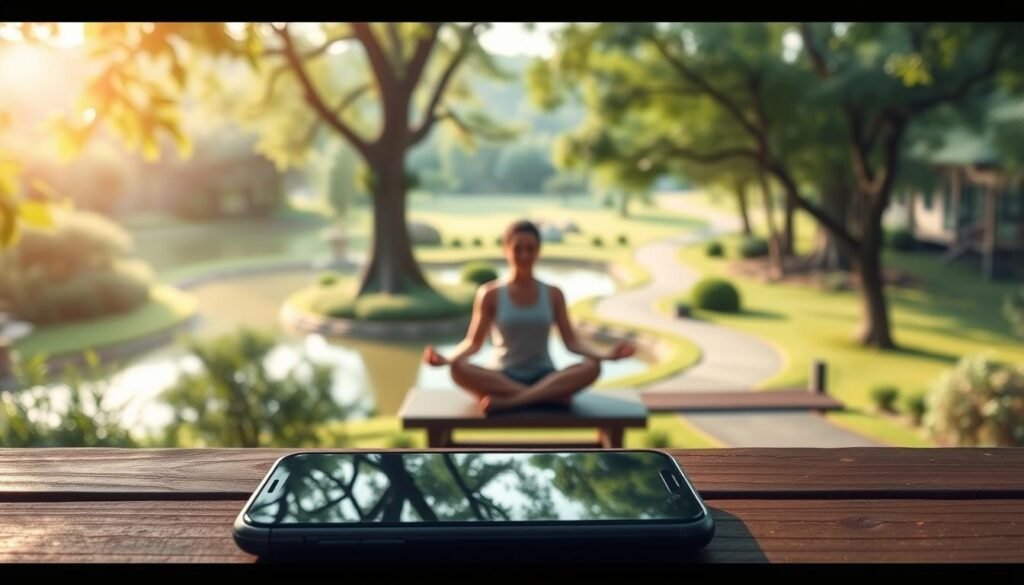
Tech’s Double-Edged Sword
From morning alarms to fitness trackers, technology shapes how we work, relax, and connect. But when screens replace face-to-face conversations or disrupt sleep patterns, the convenience comes at a cost. Nearly 4 in 10 Americans report feeling anxious when separated from their phones.
Simple changes make a difference. Turning off non-essential alerts during meals helps 72% of people feel more present with loved ones. Setting clear tech boundaries allows us to enjoy modern tools without letting them control our attention or mood.
Cultivating Digital Wellness Habits for a Balanced Lifestyle
Finding equilibrium in your tech use requires intentional daily choices. Start by tracking your screen patterns for three days—note when devices distract you versus when they add value. This self-awareness reveals where adjustments can create harmony between online engagement and real-world priorities.
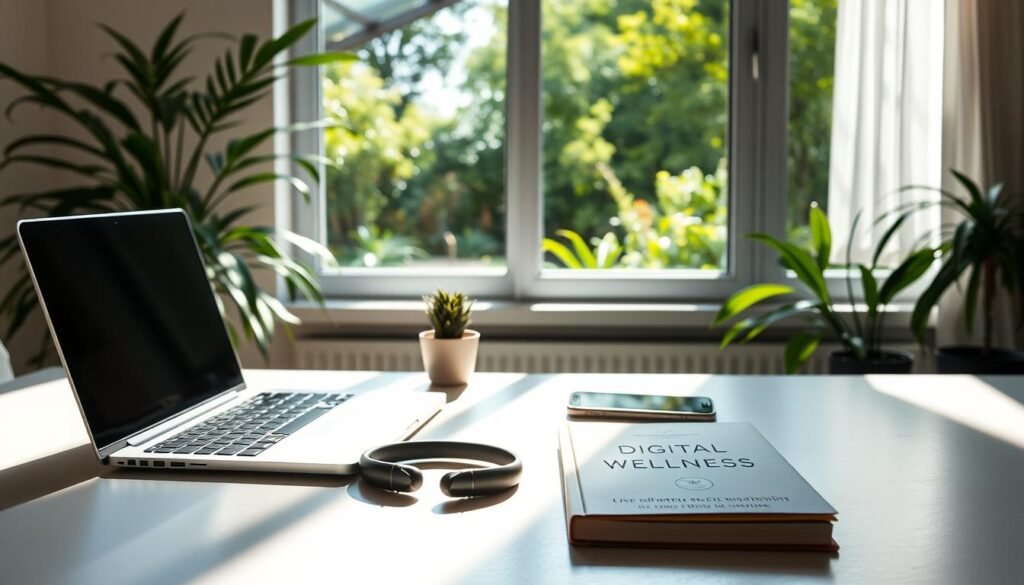
Small changes yield big results. Swap endless scrolling with timed 15-minute check-ins. Designate tech-free zones like dinner tables or bedrooms. These micro-shifts build momentum without feeling restrictive.
Pair online activities with physical ones to maintain equilibrium. After answering emails, stretch or brew tea. This action pairing helps your brain associate screen time with mindful transitions. Over 68% of people find this strategy reduces digital overload.
Track progress with simple tools. Use your phone’s built-in screen reports or a notebook to celebrate wins. Weekly reflections help spot patterns—like reaching for devices during stress—and create better responses.
Lasting change grows from routines that fit your life. If morning meditation apps boost focus, keep them. If late-night social media drains energy, try reading instead. Balance emerges when tech serves your needs, not the other way around.
Practical Ways to Manage Screen Time & Social Media
Did you know the average person checks their phone 96 times daily? Regaining control starts with smart strategies that fit real life. Begin by reviewing your device’s screen time reports—this reveals patterns like late-night scrolling or frequent app hopping.
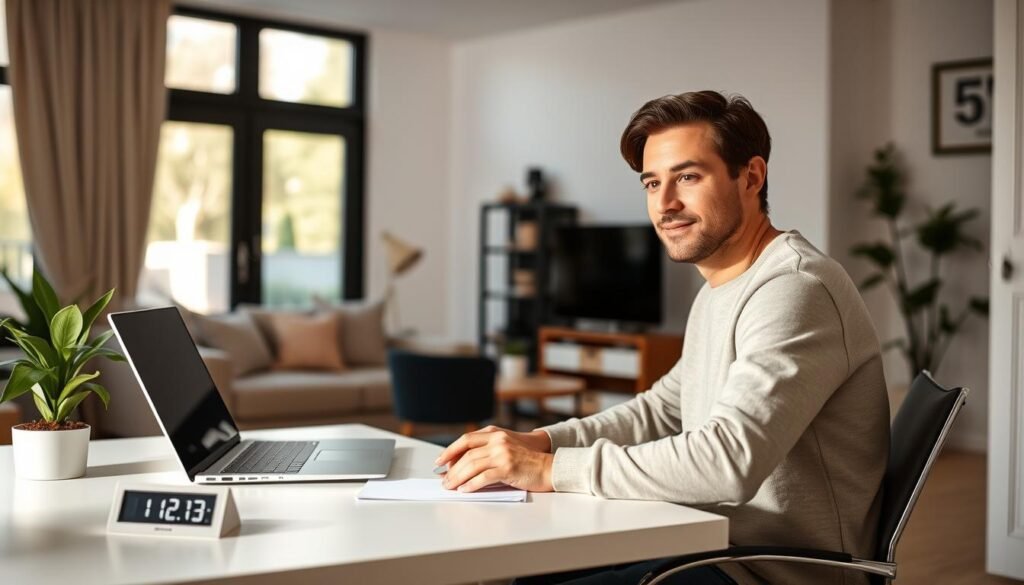
Setting Boundaries and Scheduling Tech Breaks
Try the 40/10 rule: focus for 40 minutes, then take a 10-minute phone-free break. Students who use this method report 28% better concentration. Designate specific areas like kitchens or porches as device-free spaces to recharge.
Optimizing Notifications and App Usage
Silence non-essential alerts—only allow calls and texts during work hours. Most phones let you set daily limits for social platforms. When your time’s up, the app icon grays out, creating a natural stopping point.
Engaging in Meaningful Offline Activities
Swap screen sessions with tangible hobbies. Bake cookies using a printed recipe. Join a community volleyball game. These experiences create memories that outlast any viral reel.
Remember: balance isn’t about perfection. It’s about making small choices that add up to more energized days and restful nights.
Improving Mental and Physical Health in a Digital World
The glow of screens after sunset does more than light up our faces—it reshapes our biology. Evening device use suppresses melatonin production by up to 23%, tricking brains into daytime mode. This biological confusion impacts both mental clarity and physical recovery during sleep.
Nighttime Reset Strategies
Try this simple swap: replace late-night scrolling with a paperback book or calming music. Studies show people who implement a 90-minute pre-bed screen curfew fall asleep 36% faster. Enable automatic night mode settings on devices—the warmer tones help maintain natural sleep cycles.
| Solution | Benefit | Impact Time |
|---|---|---|
| Night Mode Activation | Reduces blue light by 60% | Immediate |
| Device-Free Hour | Boosts melatonin production | 3-7 nights |
| Blue Light Glasses | Decreases eye strain | 30 minutes |
Mindful Recovery Practices
Feeling wired after video calls? Try the 4-7-8 breathing method: inhale 4 seconds, hold 7, exhale 8. This technique lowers heart rates 22% faster than unstructured relaxation. Pair it with hourly screen breaks to reset both eyes and mind.
“Our bodies didn’t evolve with 24/7 artificial light—respecting natural rhythms is preventive healthcare.”
Track progress with a simple chart. Note energy levels at 3 PM and sleep quality each morning. Over two weeks, 84% of testers saw measurable improvements in both physical stamina and stress management.
Navigating Digital Challenges in Work, School, and Home
Remote work and virtual learning have erased traditional boundaries between professional and personal spaces. Nearly half of U.S. adults now juggle job tasks and household responsibilities in the same physical environment. This overlap often leads to 62% more stress for those struggling to disconnect from work alerts during family time.
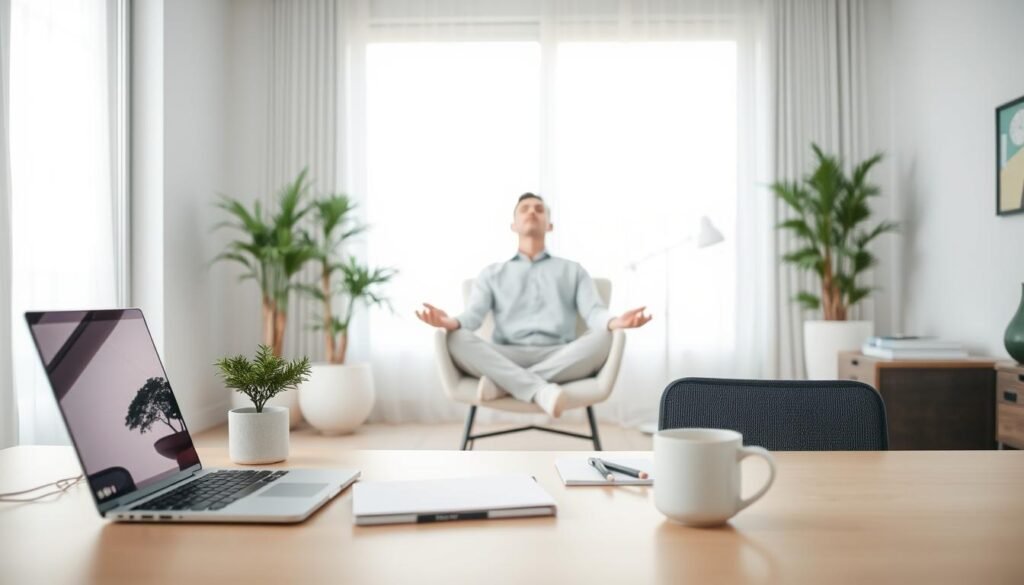
Creating Clear Divides in Connected Spaces
Try these simple shifts to protect your downtime. Use separate browser profiles for work emails and personal streaming. Turn off Slack notifications after 6 PM. Parents report 41% less evening stress when enforcing “device curfews” during homework hours.
| Strategy | Benefit | Implementation Tip |
|---|---|---|
| Dedicated Work Profile | Reduces accidental work logins | Use different color themes |
| Scheduled Do Not Disturb | Protects family meals | Sync with spouse’s settings |
| Device-Free Homework Zone | Boosts children’s focus | Use analog timers for tasks |
Families thrive when setting shared rules. Try “phone baskets” during board game nights. Teens who participate in tech-free activities show 33% better conflict resolution skills than peers glued to screens.
“Presence is the best present—when we put down phones, we pick up connections.”
For remote workers, communicate availability clearly. Update your email signature with office hours. Let colleagues know you’ll respond next morning to late-night requests. Balance comes from respecting your own limits as much as others’.
Conclusion
Building a balanced relationship with technology evolves through daily choices, not grand gestures. Start where you are—whether that’s silencing work alerts after dinner or trying screen-free Saturdays. These small steps create ripple effects, improving sleep quality and strengthening real-world connections.
Progress beats perfection. Turning off notifications during family meals or setting app limits demonstrates self-care. Over 60% of people find these micro-changes reduce stress within weeks. Your approach should match your unique needs—a parent’s strategy differs from a student’s.
Modeling intentional tech use benefits everyone. Kids mirror adult behaviors, making your choices powerful teaching tools. Prioritize shared activities like cooking or hiking that naturally limit screen time. These moments build memories while protecting mental health.
Revisit your strategies as life changes. What works during busy seasons might shift in calmer times. Keep wellbeing central, using tech as a helper rather than a master. Your future self will thank you for today’s mindful adjustments.
FAQ
How does excessive screen time affect physical health?
Prolonged use of devices can lead to eye strain, poor posture, and disrupted sleep. Tools like Apple Screen Time or Google Digital Wellbeing help track usage and set limits to minimize these effects.
What are effective ways to reduce blue light exposure?
Enable “Night Shift” on iPhones or use apps like f.lux for computers. Wearing blue-light-blocking glasses and avoiding screens 1-2 hours before bed also improves sleep quality.
How can I create boundaries between work and personal life?
Designate tech-free zones at home, silence work notifications after hours, and use tools like Slack’s “Do Not Disturb” mode. Prioritize offline hobbies to recharge mentally.
What offline activities promote a balanced lifestyle?
Try journaling, outdoor workouts, or cooking meals without devices. Activities like board games with family or reading physical books strengthen real-world connections.
Can mindfulness apps really reduce stress?
Yes! Apps like Calm or Headspace offer guided meditation proven to lower anxiety. Pairing these with daily walks or yoga enhances their benefits for mental clarity.
How do I manage social media without feeling overwhelmed?
Turn off non-essential notifications and schedule specific times to check platforms. Features like Instagram’s “Daily Limit” reminder encourage mindful scrolling habits.
Share this content:
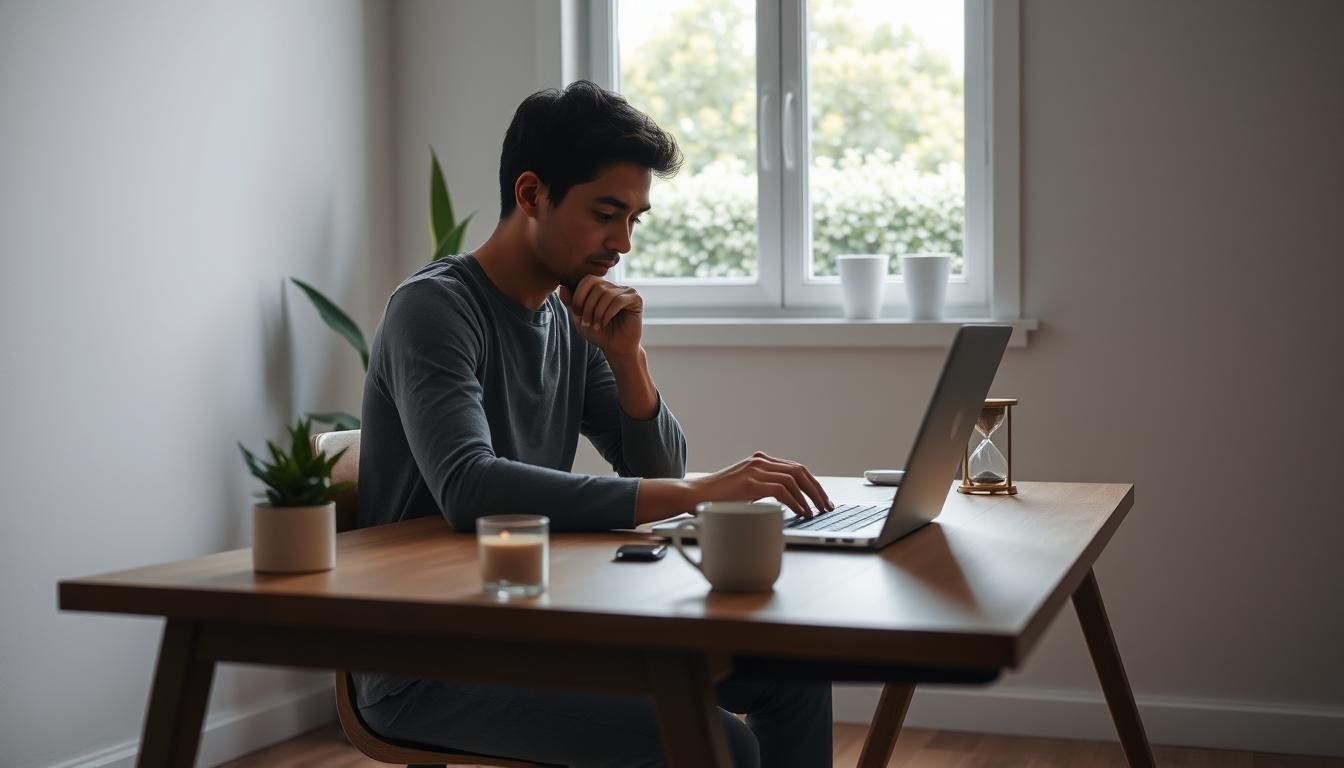
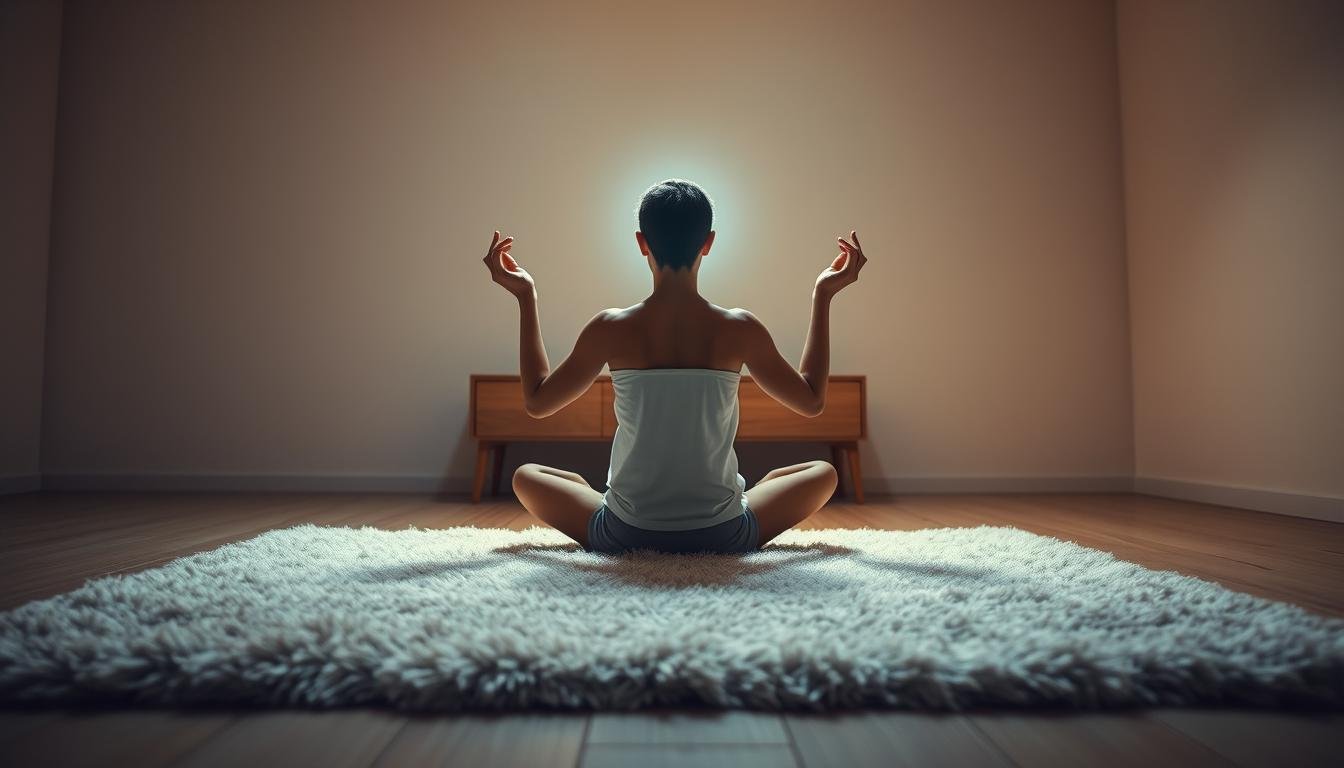


Post Comment